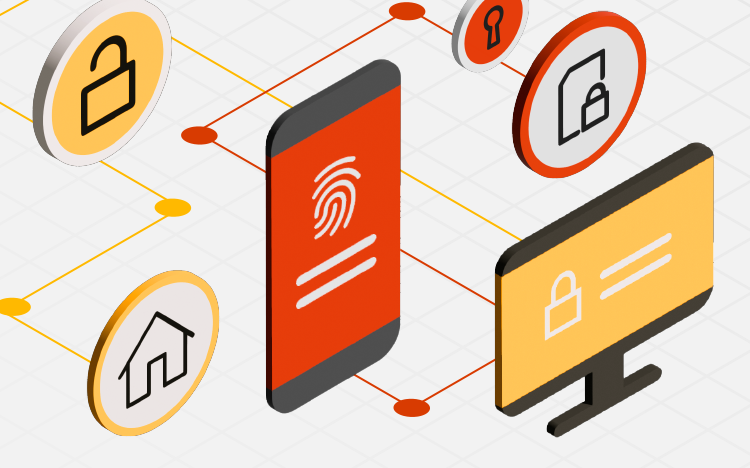Secure your Internet of Things: Why Insider Threat Detection is Vital
Cyberattacks on the Internet of Things (IoT) devices can have dire consequences. What is internet of things definition? Unlike most cyber incidents, attacks on IoT can have potentially catastrophic impacts on the physical world. When we think about threats to IoT devices, we typically consider external threats; distributed denial of service (DDoS) attacks, brute force attacks, botnets, and so on. But the greatest threats to IoT devices often come from inside the targeted organization.
Table of Contents
This article will explore why insider threats pose such a threat to IoT devices and what organizations can do to detect and prevent them.
What is IoT with an example?
What is an Insider Threat?
An insider threat is a current or former employee, business partner, contractor, or any other legitimate personnel that intentionally or unintentionally exposes their organization’s sensitive data or facilitates a cyberattack.
What is the Internet of Things Definition?
IoT, or Internet of Things definition, is a broad term encompassing internet-connected physical devices, vehicles, appliances, and various other “things.” Developers embed these objects with sensors, software, and network connectivity, enabling them to collect and exchange data seamlessly.
The IoT technology empowers devices to gather data through their sensors and establish communication with other devices and systems, creating a robust information network that enhances their capabilities and functionality. Across numerous industries, from smart homes to remote monitoring in manufacturing processes, IoT aims to elevate automation, efficiency, and convenience.
Take, for instance, a smart home, where IoT devices like thermostats, lighting systems, and security cameras are interconnected and managed through a central hub. Homeowners can effortlessly control their home’s temperature, lighting, and security from any location and at any time.

The Internet of Things is used in many places, but most importantly in sensors.
Insider Threats to the Internet of Things

Insider threats to IoT are a bigger problem than ever. Remote working has resulted in a dramatically expanded attack surface and staff accessing sensitive systems and information from home. It’s no longer enough to protect an organization’s perimeter because the perimeter no longer exists.
Remote working is a significant contributor to the rise of insider threats. Early this year, 74% of organizations reported an increase in insider attacks. This increase is perhaps unsurprising; detached from their colleagues and company HQ, and it’s not only easier for employees to access and exfiltrate sensitive information than ever before but also to justify their actions, viewing their organization as a faceless behemoth rather than a community.
Similarly, employees are more dissatisfied than ever. Inflation means salaries don’t go as far as they used to, wealth inequality results in more staff resenting their employers, and the constant threat of redundancy has left a bad taste in many employees’ mouths. Considering personal gain and revenge are two critical motivators for insider threats, it’s no wonder that they are on the rise.
Detecting and Preventing Insider Threats to the Internet of Things
Detecting and preventing insider threats requires organizations to implement a comprehensive security policy. This includes security awareness training, user and entity behavior analytics (UEBA), and data loss prevention (DLP) solutions. Let’s dive deeper into those three essentials to understand better how they prevent insider threats.
First, security awareness training empowers staff to identify and prevent insider threats. Regular, role-specific training reduces the risk of falling for a social engineering scam and becoming an accidental insider threat. It also increases the likelihood of them identifying possible intentional insider threats.
UEBA solutions leverage advanced algorithms and machine learning (ML) technologies to detect user and entity behavior abnormalities. By collecting baseline data establishing normal behavior, UEBA solutions automatically detect and flag deviations. These could indicate a potential insider threat. For example, suppose a user attempts to access sensitive files outside their jurisdiction, work hours, and usual location. In that case, UEBA solutions alert the security team, who will then investigate further.
Security teams can also utilize UEBA solutions to assign users risk scores, which indicate how likely an employee is to become an insider threat. These risk scores are developed over time, leveraging the collected data to determine what normal behavior looks like for a user and how often they deviate from that norm. The more often a user exhibits suspicious behavior, the higher their risk score, thus allowing security teams to prioritize investigations should an incident occur.
Conclusion
Finally, DLP solutions prevent data loss by integrating with core system infrastructure at the endpoint layer considering internet of things definition. For example, a device’s operating system or browser. By integrating in this way, DLP solutions monitor data ingress and egress on the device without having to decrypt traffic. Thus leaving the machine to perform content inspection. Moreover, DLP solutions monitor file operations at the endpoint and cloud layers. Hence, using collected metadata to provide security teams with context about what data is business-critical or at the most risk of exposure. And allowing them to prioritize security efforts.
However, organizations must remember that not every solution will suit their needs. It’s important to evaluate solutions according to your specific requirements.
Insider threats are one of the most significant dangers to IoT. Their insight and access to an organization’s most sensitive information put them in a unique position to compromise them, and an increasingly turbulent global economy is motivating more people to become insider threats. Organizations should implement security awareness training, UEBA tools, and DLP solutions to protect their IoT from insider threats.
Musa is a certified Cybersecurity Analyst and Technical writer. He has experience working as a Security Operations Center (SOC) Analyst and Cyber Threat Intelligence Analyst (CTI) with a history of writing relevant cybersecurity content for organizations and spreading best security practices. He is a regular writer at Bora.










